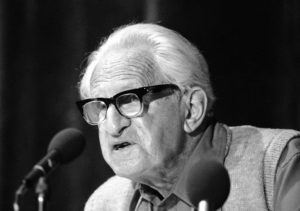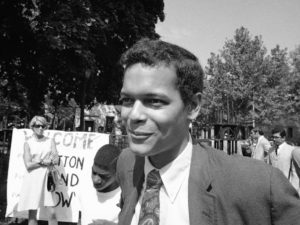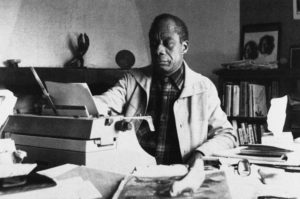Tony Platt on Ishi — the Last of the Yahi
A new book by Douglas Cazaux Sackman gives us new ways of thinking about the last man “uncontaminated” by modernity and explores our continuing nostalgia for the “wilderness.”A new book by Douglas Cazaux Sackman gives us new ways of thinking about the last man “uncontaminated” by modernity.
Many of you no doubt recall some basic impressions about Ishi: how a Yahi survivor—the “last wild Indian”—emerged from hiding in the small California town of Oroville in August 1911 to become a big-time celebrity under the guardianship of anthropologist Alfred Kroeber until his death in San Francisco in March 1916. It’s familiar because the Ishi story generated a cottage industry of publicity, from the millions of words written about him in the popular press in the 1910s to a flurry of books since the 1960s.
Kroeber (1876-1960) produced some 550 publications during his distinguished academic career, but wrote surprisingly little about Ishi. His wife, Theodora Kroeber, had great sucesss with “Ishi in Two Worlds,” published in 1961, the year after her husband’s death. It’s a well-told tale of pop anthropology that humanizes Ishi and resonates with a broad audience, much like Anne Frank’s diary. A new edition, with a filial introduction by Karl Kroeber, published in 1989, pushed sales of the book to more than 1 million. For the academically inclined, there is an anthology of primary documents, “Ishi the Last Yahi,” edited by Robert Heizer and Theodora Kroeber (1979). And in 2004, anthropologist Orin Starn also reached a wide audience with “Ishi’s Brain,” a smart muckraking investigation into the disrespectful treatment of Ishi’s body after his death that deflated the hitherto unsullied reputation of Alfred Kroeber and UC Berkeley’s department of anthropology. Starn’s book, inter alia, provoked a departmental apology for the “final betrayal of Ishi”—namely, shipping off his brain to the Smithsonian.1 [See unlinked footnotes at end of article.]
Wild Men: Ishi and Kroeber in the Wilderness of Modern America
By Douglas Cazaux Sackman
Oxford University Press, 384 pages
You would think the subject matter of Ishi has been thoroughly raked over by now, but Douglas Cazaux Sackman, a historian at the University of Puget Sound, has found two new seams that promise a payoff. The results are mixed. “Wild Men: Ishi and Kroeber in the Wilderness of Modern America” gives us new ways of thinking about the Ishi phenomenon by locating the fascination with the “last uncontaminated man” in cultural anxieties about modernity and nostalgia for the “wilderness.” The book is less compelling, however, when it turns the Kroeber-Ishi relationship into a mawkish parable about how two men from different worlds “stood looking at each other from the opposite edge of a chasm” and “reached out in the hope of keeping the other from falling in.”
In 1901 Kroeber, under the patronage of Phoebe Hearst, joined the new department of anthropology at the University of California at Berkeley and became director of the university’s Museum of Anthropology in San Francisco. It was a time of fierce competition between museums for collections of “Indian relics,” and Kroeber joined the hunt. When Ishi emerged from hiding in 1911—the only survivor of massacres, bounty hunts, epidemics and starvation that wiped out the Yahi people—Kroeber quickly staked a claim to becoming his official guardian after he learned from an assistant that “this man is undoubtedly wild” and will make a “good exhibit for the public.” Kroeber housed Ishi in a room at the museum, gave him a job as a janitor, and proudly displayed him to his colleagues and the curious as “the most uncivilized man in the world today.”
Thousands of people showed up at the museum to watch Ishi drilling fire and making arrowheads, or followed his adventures through the local press, which documented every outing to Golden Gate Park, the theater and upscale social events. For Sackman, this obsessive interest in Ishi was related to “contemporary crazes for hunting, camping, and wilderness trekking,” in particular a desire by the urban middle class to assert “the white male body in the machine age.”
Ishi was not the only “wild man” to become a media star. Sackman tells us about “Nature Man No. 1,” Ernest Darling, a medical school dropout, whose experiences in the wilds of Maine were popularized by Jack London; and “Nature Man No. 2,” Joseph Knowles, an illustrator, whose vicarious experiences as a “cave man” in the Siskiyou Mountains were reported by The San Francisco Examiner.
There is a wonderful, stand-alone set piece in “Wild Men” that graphically illustrates why so many respectable men “harbored a tangled and confused desire” to go Indian. In May-June 1914, Kroeber persuaded Ishi to join a small expedition to his homeland in order to document place names, diet and topography. Initially, Ishi “refused to go back” to a place that he associated with death and misery, or to leave “the comforts of civilization.” But while he eventually complied with Kroeber’s request to restage how he had hunted and survived, he would go only so far. Sackman takes us on a journey to this camp-out by assembling a scrapbook and album of original photographs, including a snapshot of Ishi in loincloth gazing at Kroeber posing in the nude.
Sackman tries his best to get inside Ishi and Kroeber’s attitudes to their relationship. The problem, which he’s unable to solve, is that Ishi guarded his personal life, while Kroeber’s family has so far successfully guarded the anthropologist’s personal writings from researchers.
“I will not tell anything about myself,” Ishi said when Kroeber hired a native Yana speaker to translate for him. Sackman compensates for this lack of evidence by drawing upon native myths and stories to imagine how Ishi might have remembered his life and experienced his last four years as a living relic in the university’s cabinet of curiosities. The author does a good job of evoking Ishi’s two worlds, but makes a patronizing stylistic decision to represent his voice in staccato, childlike sentences: “He learned to chip arrowheads, to keep watch, to sing the language of the birds, the animals. All the world was alive. All the world was watchful. You had to respect it.” As for Kroeber, Sackman pores over his voluminous but sanitized papers in Berkeley’s Bancroft Library and looks for hidden clues in Theodora’s dutiful memoir (“Alfred Kroeber: A Personal Configuration,” 1970). But without access to diaries, letters and personal revelations, we are left only with the author’s speculation that “wildness is something that dwelled within, repressed by his own culture and his chosen profession of anthropology.”
The case for the inner Kroeber identifying with Ishi is rather thin. It is true that Kroeber did not support a dissection of Ishi’s body. “If there is any talk of the interests of science,” Kroeber wrote from New York to his assistant, Edward Gifford, “say for me that science can go to hell. We propose to stand by our friends.” Against Kroeber’s advice, the museum went ahead with the autopsy. But a few months later, after his return to the Bay Area, Kroeber did not have any moral qualms about sending Ishi’s brain to a eugenicist at the Smithsonian. Moreover, under Kroeber’s leadership Berkeley’s department of anthropology amassed thousands of native craniums, and Gifford was encouraged to develop his penchant for measuring skulls in the search for racial explanations of social difference.2
Wild Men: Ishi and Kroeber in the Wilderness of Modern America
By Douglas Cazaux Sackman
Oxford University Press, 384 pages
Kroeber himself did not buy into prevailing views about multiple human races. He was, as Sackman discusses, a cultural relativist who argued against the “hoary taboos” of white supremacy and ethnocentrism. But he was not immune to racialized imagery, a topic that Sackman tends to sidestep. “By temperament,” Kroeber observed in a speech to the Commonwealth Club of California in 1909, the “California Indian is docile, peaceful, friendly, sluggish, unimaginative, not easily stirred, low-keyed in emotion, almost apathetic.”3 Nor does “Wild Men” acknowledge Kroeber’s public description of Ishi as a “puppy” who “comes running when you call him, and if you were to tell him to stand in the corner or stand on his head, if he were able he would do it without hesitation.” 4
In order to find common ground between the two “wild men,” the author has a tendency to exaggerate Kroeber’s social activism. “The deep prejudice that had engulfed California’s Indians for a century—a prejudice that held that they were ‘diggers’ who lived off roots and insects and had no culture or even language—was swept away by Kroeber’s relativistic research,” asserts Sackman. This is wishful thinking. Kroeber certainly had an impact on the field of anthropology, but almost no impact on the “deep prejudice” of public discourse. Throughout most of his lifetime, the popular press and publishing industry saturated a large and receptive audience of readers with relentlessly racist images of native peoples as stupid and brutish, backward, a drag on progress, childlike and predisposed to extinction. Moreover, Kroeber rarely spoke out against California’s genocidal past (though Theodora did so eloquently after his death), preferring to focus on what he called “the purely aboriginal, the uncontaminatedly native.”5
Sackman argues, as have others, that Kroeber was propelled into a personal crisis after the death from pneumonia of his first wife, Henriette, in 1913 and of Ishi two years later, and by news of the carnage taking place in Europe during World War 1 (his parents were immigrants from Germany). Kroeber could not write about Ishi, Theodora suggested in her memoir, because “he had lived too much of it, and too much of it was the stuff of human agony from whose immediacy he could not sufficiently distance himself.”6 There’s some support for this thesis in Kroeber’s decision to undergo psychoanalysis in 1917 and to begin a second career as a therapist. But Kroeber continued a furious output of anthropological writing during this period, and by the 1920s was again teaching full time at Berkeley and was remarried, to Theodora. Maybe he was occasionally haunted in his dreams by images of Ishi and death. Maybe not.
I share Doug Sackman’s desire to break with old-style radical history that simplistically posits good guys against bad guys, oppressors against resisters. He identifies, as I do, with “the new western historians,” such as Patricia Limerick and Richard White, whose “multiperspectival” approach advocates moving beyond overly romantic interpretations of the native past and demonization of settlers, pioneers and anthropologists. It’s one thing, however, to reject a black-and-white view of history; it’s another to throw out power along with the binaries. There’s no question that Kroeber had an impact on Ishi: He changed his life fundamentally and took action that exposed him to an infection that caused his death. But whether Ishi had an impact on Kroeber other than enhance a career brimming with success remains an open question.
|
Tony Platt is working on a book about the history of anthropology in Northern California, and with the Coalition to Protect Yurok Cultural Legacies at O-pyúweg (Big Lagoon, Calif.). See his blog on history and memory at http://goodtogo.typepad.com/ |
Footnotes: 1. On the politics of the apology, see Nancy Scheper-Hughes, “Ishi’s Brain, Ishi’s Ashes: Anthropology and Genocide,” Anthropology Today, Vol. 17, 2001, Pages 12-19. 2. See, for example, Edward Gifford, Californian Anthropometry, University of California Press, 1926. 3. A.L. Kroeber, “The Indians of California,” Transactions of the Commonwealth Club of California, Dec. 4, 1909, Page 434. 4. A.L. Kroeber, “It’s All Too Much for Ishi, Says The Scientist,” San Francisco Call, Oct. 8, 1911. 5. A.L. Kroeber, “Two Papers on the Aboriginal Ethnography of California,” Reports of the University of California Archaeological Survey, No. 56, March 1, 1962, Page 58. 6. Alfred Kroeber, “A Personal Configuration,” Page 93.
Your support matters…Independent journalism is under threat and overshadowed by heavily funded mainstream media.
You can help level the playing field. Become a member.
Your tax-deductible contribution keeps us digging beneath the headlines to give you thought-provoking, investigative reporting and analysis that unearths what's really happening- without compromise.
Give today to support our courageous, independent journalists.







You need to be a supporter to comment.
There are currently no responses to this article.
Be the first to respond.